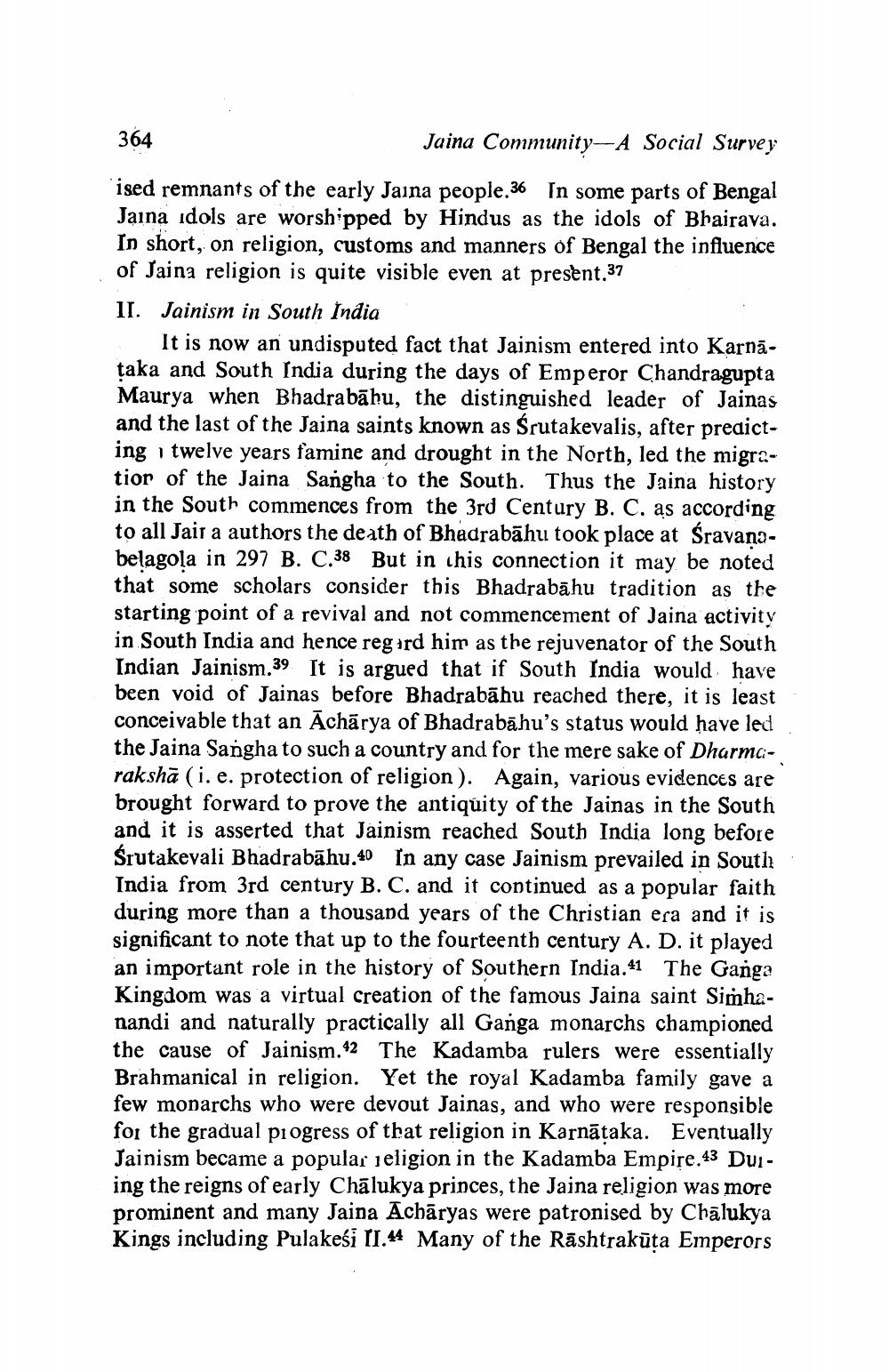________________
364
Jaina Community- A Social Survey
ised remnants of the early Jaina people.36 In some parts of Bengal Jaina idols are worshipped by Hindus as the idols of Bhairava. In short, on religion, customs and manners of Bengal the influence of Jaina religion is quite visible even at present. 37 II. Jainism in South India
It is now an undisputed fact that Jainism entered into Karnātaka and South India during the days of Emperor Chandragupta Maurya when Bhadrabāhu, the distinguished leader of Jainas and the last of the Jaina saints known as Śrutakevalis, after predicting 1 twelve years famine and drought in the North, led the migratior of the Jaina Sangha to the South. Thus the Jaina history in the South commences from the 3rd Century B. C. as according to all Jair a authors the death of Bhadrabāhu took place at Sravanabelagola in 297 B. C.38 But in this connection it may be noted that some scholars consider this Bhadrabāhu tradition as the starting point of a revival and not commencement of Jaina activity in South India and hence regard him as the rejuvenator of the South Indian Jainism.39 It is argued that if South India would have been void of Jainas before Bhadrabāhu reached there, it is least conceivable that an Acharya of Bhadrabāhu's status would have led the Jaina Sangha to such a country and for the mere sake of Dharmarakshā (i. e. protection of religion). Again, various evidences are brought forward to prove the antiquity of the Jainas in the South and it is asserted that Jainism reached South India long before Śrutakevali Bhadrabāhu.40 In any case Jainism prevailed in South India from 3rd century B. C. and it continued as a popular faith during more than a thousand years of the Christian era and it is significant to note that up to the fourteenth century A. D. it played an important role in the history of Southern India. 41 The Ganga Kingdom was a virtual Creation of the famous Jaina saint Simhanandi and naturally practically all Ganga monarchs championed the cause of Jainism.42 The Kadamba rulers were essentially Brahmanical in religion. Yet the royal Kadamba family gave a few monarchs who were devout Jainas, and who were responsible for the gradual progress of that religion in Karnātaka. Eventually Jainism became a popular neligion in the Kadamba Empire.43 Duiing the reigns of early Chālukya princes, the Jaina religion was more prominent and many Jaina Achāryas were patronised by Chalukya Kings including Pulakesi (1.44 Many of the Rāshtrakūta Emperors




